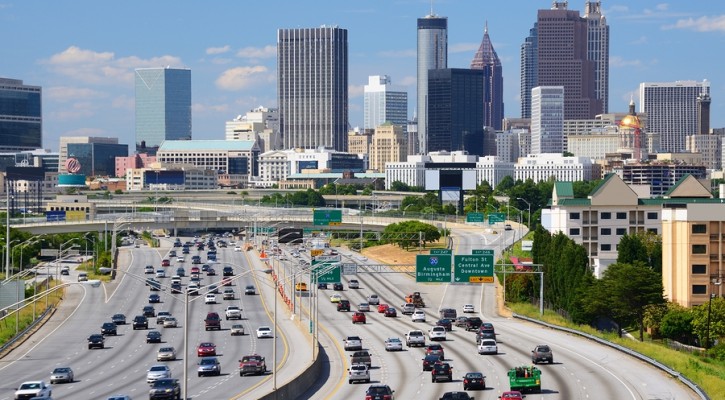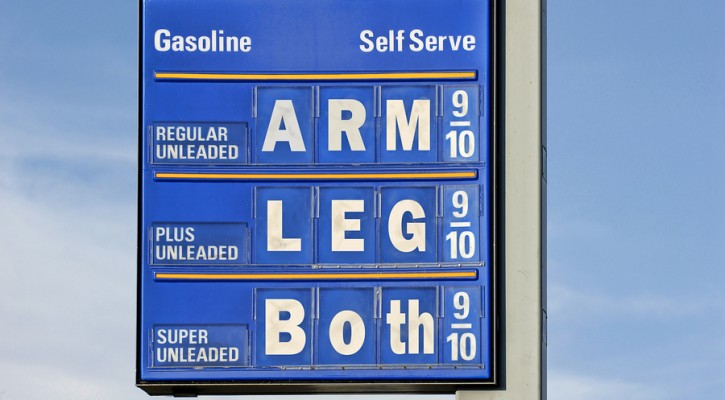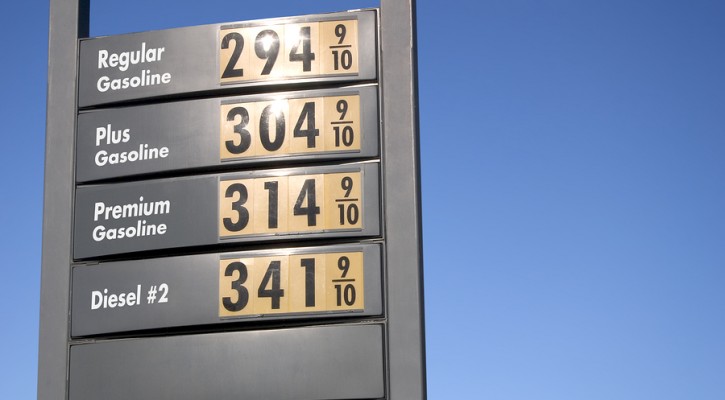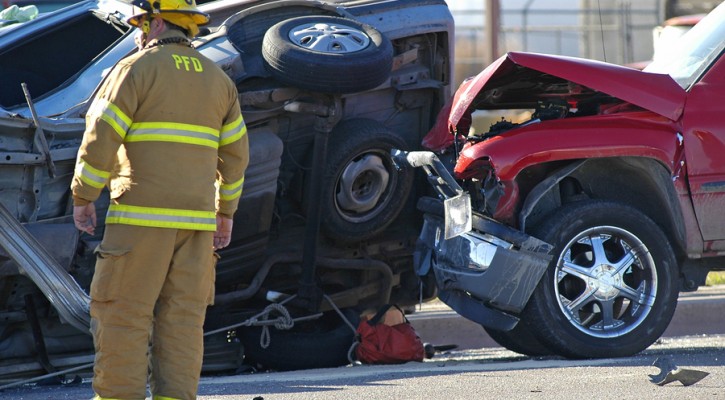
How to Fix a Flat Tire
August 15, 2014
When your luck runs out and you find yourself on the side of the road with a flat tire, will you be prepared?
You can be. All it takes is a little know-how.
Obviously, it helps to have a spare tire and a jack. However, if you would rather fix that flat than ride around on an inferior spare tire, then you’ll need a plug kit.
The cheap-yet-indispensable repair kit can be purchased at any auto parts store. Plug kits come with a bunch of plugs, a reamer (tool used to size & roughen the hole), and a tool for inserting the plugs. All you have to do is use the reamer to create the plug hole, thread the plug into insertion tool, and then insert the plug into the tire. (No need to take notes, there will be directions on the kit).
Now that your tire is plugged and ready to roll, you may be wondering “O.k., now how long will this last before I crash and burn?” Well, legally we should tell you to take that tire to a tire shop right away for a professional patch job. However, we can also tell you about a recent blog post from those great guys at Car Talk.
Click and Clack gave this reasonable advice to a flat tire victim: “Actually, plugs have been used since the days of the Roman chariots. OK, not that long, but they’re well-established and effective. As long as the hole in the tire is not too big (and screw or nail holes are not too big), you can insert a plug and expect it to last for the remaining life of the tire.”
So there you go. If the tire is in good shape and the hole isn’t too big, then a good old-fashioned plug has been known to last a tire’s lifetime.
That being said, there are times when a professional plug/patch job may be required. For example, if the tire ran on low pressure for a while, then it may have more damage than you think. Also, there may be legal implications if you are driving a commercial or company vehicle. So, if you need a tire that is 100% worry-free, then get it fixed by a pro. Or better yet, just buy a new tire.

Copenhagen’s Bicycle Heaven
August 14, 2014
We all wish that bicyclists and drivers could live in harmony. Though, we must admit, this relationship would be a lot better if our infrastructure was built for it.
Copenhagen is a prime example of bicycle heaven. In this ultra-bicycle-friendly city, more than 50% of residents ride their bike to work. And, why wouldn’t they? With traffic lights timed for bicycle speeds, cobblestone paths with smoothed shoulders, and parking systems that buffer cycle lanes from moving traffic, it’s no wonder that more people feel safe enough to commute via bike.
And now, Copenhagen has topped itself as one of the most bicycle friendly cities in the world. With the addition of the Cykelslangen, or Cycle Snake, bicyclists can now skip the traffic and congestion all together, and ride over this awesome skyway.
See the full story (and all the beautiful photos) of bicycle heaven here:

Trucks Vs Cars: Who Causes the Most Collisions?
August 12, 2014
In the great Trucks Vs Cars debate, many drivers fail to realize that they are always responsible for their own actions. No matter who is technically “at fault” for an accident, each and every driver has a responsibility to drive safe, stay alert, and do everything they can to avoid a crash.
That being said, many drivers may be surprised at who actually wins the Trucks Vs Cars debate. Particularly these days, with the big, giant “Tracy Morgan Crash” taking up all the headlines and making truck drivers look like irresponsible, sleep-deprived road hazards.
A recent article by Traffic Mike does a great job of illustrating the relationship between trucks and cars. He tells us about his long journey through the uneventful state of Indiana, the potholes of Michigan, and the helpful blue signs along Kentucky’s highways. These informational signs show drivers how to pass an 18-wheeler correctly, allowing plenty of room before cutting back into the right lane. “Give them room” and “IT’S THE LAW” are prominently displayed.
He then cites an interesting study done by the University of Alabama’s Center for Advanced Public Safety, which found these especially-surprising results:
- In fatal crashes, investigations found drivers of passenger vehicles were at fault 78 percent of the time, truck drivers only 22 percent.
- The proportion switches as the crashes get less severe. As injury level declines, the fault attributed to trucks increases though passenger vehicles remain the majority of the cause.
- However, with crashes that involved only property damage, trucks were listed at fault the majority of the time — almost 60 percent.
Consider these statements for a minute. Then, head on over to this link to read Traffic Mike’s full post. He makes some excellent points with just the right amount of humor to get the message across:
Knowing the “No-Zones”: The truth about cars and 18-wheelers

Costs of a Car Owner
August 12, 2014
Buying a car? You may want to consider how much that purchase will cost you in the long run. Luckily, Bankrate recently summarized the costs that a car owner can expect to pay each year, listing the average prices for all 50 states.
According the Bankrate.com, Wyoming ranks in as the most expensive state to own a car (or more likely, a truck). Drivers in the Cowboy State spend an average of $2,705 per year on gas, insurance and repairs… but mostly gas. Not surprising, considering the sky-high gas prices and popular mode of transportation: a solid, full size pickup.
The southern states of Louisiana, Florida and Mississippi are the next priciest places to be a car owner. Not only do southerners love to drive gas guzzlers, but drivers in these states also fork out more cash for insurance costs.
New Jersey joins the South as one of the most expensive places to own a car thanks to a killer combo of high repair costs and high insurance costs, while paying some of the least amount of money for gas each year. (Guess you can save quite a bit on gas when you’re car’s always in the repair shop).
Meanwhile, Iowa, Ohio and Illinois drivers will be happy to know that these Midwestern states are the least expensive places to own a car. A car owner can expect to pay less than $2,000 per year in this region, making it the most affordable part of the country to drive. These lucky drivers benefit from low repair costs, as well as extremely low gas and insurance costs.
To see the full list of average car owner costs by state, see the full article here:

Thinking of Buying an Electric Car?
August 11, 2014
If there’s anything consistent in this world, it’s the ever-raising cost of gasoline. Even with the recent drop in prices this summer, there’s little doubt that next year’s price-per-gallon will be more than this year. That’s why many new car owners are considering buying an electric car.
For most people, new-car shopping is not an affordable luxury. Instead, they begin searching the used car classifieds and dealerships in pursuit of the best deal. However, in the world of electric cars, you just might be better off with a brand new model.
At least, in most states. This informational post over at Wired explains how leasing a new electric car can be more affordable than buying a used electric car:
Why It’s Cheaper to Lease New Electric Car Than Buy a Used One

The Scoop on Premium Gas
August 10, 2014
What is premium gas? Why would you need it, and does it really do us drivers any good? Click and Clack are here from Car Talk to answer those questions – and clear up a few myths – about premium gas. Before forking out an extra 20 – 30 cents per gallon, you’d better read through these commonly asked questions about Regular vs. Premium gas:
A Letter from Cyclists
August 8, 2014
The message is simple: Motorists need to respect cyclists, and cyclists need to respect motorists. Both need to follow the laws of the road, drive and ride responsibly, and be safe out there so that everyone can #ArriveAlive.
See the powerful letter read from mothers, fathers, brothers, sisters… cyclists.

Gas Prices Going Down?
August 7, 2014
The summer is in full swing, with full-heat and full-summer-fun bearing down on us. This is usually about the time that gas prices soar so high they cause spastic cringing at the pump. However, this August has seen the lowest gas prices in 4 YEARS!
CELEBRATE GOOD TIMES!
It’s indeed a time to rejoice. In fact, CNN Money predicts that people in some parts of the country will be paying less than $3 a gallon by the end of the year. While that might seem like wishful thinking, we’re certainly on the right track. The national average price per gallon is a whopping 15-cents lower than July 4, and a mind-blowing 35-cents lower than June.
If prices continue going down, we’ll be seeing some pretty happy drivers this year. If prices continue going down until they hit $3 per gallon, we’ll all be crying tears of joy… at least for a little while.
But, let’s not get too ahead of ourselves. The future is a finicky mistress, especially when it comes to the oil market. The best course of action is to cross our fingers and enjoy the low prices while they last.

Which States Have the Deadliest Roads in America
August 5, 2014
There are parts of America where tourists flock for easy-breezy scenic drives. Then, there are parts of America that drivers avoid like the plague – because these places could actually kill you. Do you know which states are most likely to claim lives on the road? More importantly, do you know why more people die in car crashes in these states?
Luckily, we have found a great, interactive website for learning which states have the deadliest roads in America. You can toggle the columns to see the most traffic deaths by state, the most traffic deaths per capita, and the percentage of traffic deaths caused by DUI.
It’s an incredibly interesting tool with some surprising figures. Find out if your state is one of the places with the deadliest roads in America:
A Giant Drivers License Infographic
August 4, 2014
The fine folks at DMV Cheat Sheets have put together this big, giant infographic about every type of drivers license. Full of useful info, amazing facts, and answers to tons of questions, we think you’ll get a lot out of this fun fact-packed graphic.
Learn what your drivers license can do for you:

